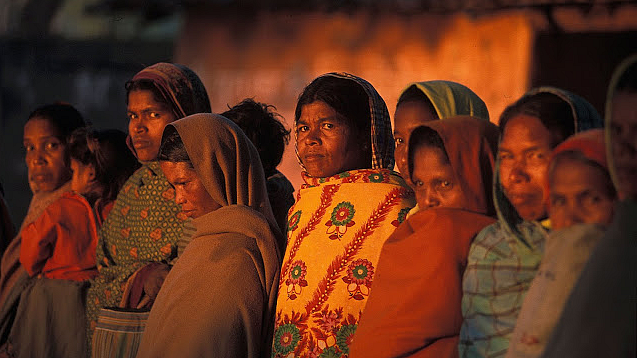Why are older women missing in India?
According to a researcher, “Unlike the missing girls phenomenon, excess female mortality at older ages in India has not received much attention and remains a puzzle”

Nobel laureate Amartya Sen in early 1990s, referring to fact that there are far more men than women in India, relative to developed countries, dubbed this as "the missing women phenomenon". The reasons he cited included sex-selective abortion and excess female mortality at early ages due to parental preferences for sons.
Conceding that Prof Sen's work was undoubtedly "seminal", a fresh research by an American scholar, taking the " missing women" phenomenon a little further, has sought to argue that close to half of missing women in India are of post-reproductive ages, i.e., 45 and above.
According to this researcher, "Unlike the missing girls phenomenon, excess female mortality at older ages in India has not received much attention and remains a puzzle", one reason why she seeks to explain the puzzle by examining "the critical connections" between women’s age and intra-household bargaining power, impacting health and morbidity.
Assistant professor of economics, Rossella Calvi of the Rice University, Texas, US, in her research paper, "Why Are Older Women Missing in India? The Age Profile of Bargaining Power and Poverty", estimates, as "women’s resource shares relative to men’s decline steadily at post-reproductive ages", in households with women’s average age above 45, "the resource shares ratio is particularly skewed, with women getting as low as 65 percent of men’s resources."
Using a complex research methodology, the researcher says, “My poverty estimates indicate that at all ages there are more women living in poverty than men, but the gap between female and male poverty rates widens dramatically at post-reproductive ages.” But “for individuals aged 45 to 79, poverty rates are on average 80 percent higher among women than men.”
Providing two separate set of poverty estimates -- based on the thresholds set by the World Bank for extreme poverty (1.90 US$/day) and average poverty (3.10 US$/day), the paper says, "Specifically, 17 percent of households have women living in extreme poverty, while 14 percent of households have men living on less than US$1.90/day.
In terms of individual head count ratios, however, the researcher estimates, "22 percent of women live below the extreme poverty cutoff, while 17 percent of men do." Insists the paper, "Similar gender patterns hold when the alternative poverty line is considered: About 52 percent of women live with less than US$3.10/day, while about 1 man out of 3 lives below this threshold."
According to the researcher, among the reasons explaining this phenomenon include the "traditional gender norms", which define "child bearing and rearing as women’s primary duties", something that is "still prominent in India and only slowly changing". She adds, "A decrease in women’s bargaining power at post-reproductive ages may therefore be due to their inability to perform these functions."
At the same time, the researcher says, "Household socio-economic characteristics play an important role, too", pointing out, "In particular, being part of Scheduled Caste, Scheduled Tribes, and other disadvantaged social classes is associated with higher women’s bargaining power. The same holds true for residing in the North-East states, which is consistent with the presence of a number of matrilineal societies and cultures in these regions (Khasi and Garo societies, for example)." She adds, "In contrast, North Indian women seem to have a much lower bargaining power."
Using a complex research methodology, the researcher says, "My poverty estimates indicate that at all ages there are more women living in poverty than men, but the gap between female and male poverty rates widens dramatically at post-reproductive ages." But "for individuals aged 45 to 79, poverty rates are on average 80 percent higher among women than men."
In fact, largely basing on data from the National Sample Suevey and the National Family Health Survey, she says, "The decline in women’s bargaining position during post-reproductive ages ... can account for up to 89 percent of the missing women in the 45-79 age group."
At the same time, Calvi says, "Granting access to equal inheritance rights for all women ... significantly reduces female poverty", adding, "The fraction of women in poverty is 7.5 percent lower in the counterfactual scenario. Moreover, at post-reproductive ages, a 27 percent reduction in excess female poverty can be obtained by equalizing inheritance rights across genders."
Follow us on: Facebook, Twitter, Google News, Instagram
Join our official telegram channel (@nationalherald) and stay updated with the latest headlines
